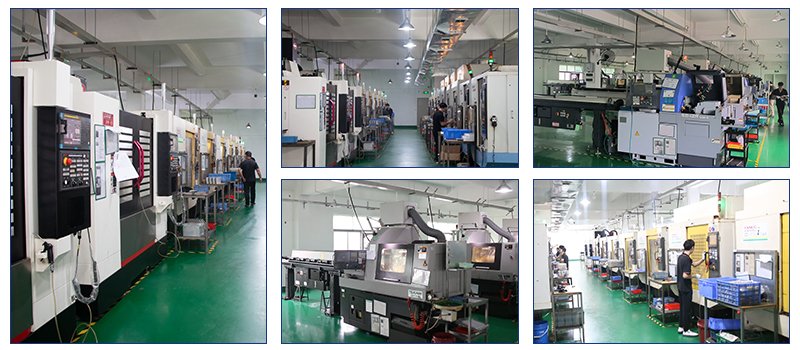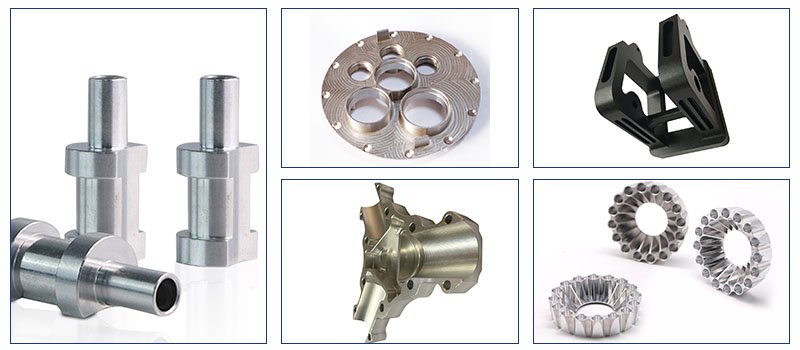As someone who’s been immersed in the world of CNC machining for years, I often find myself explaining the differences between 3-axis, 4-axis, and 5-axis machining to clients. These are the building blocks of precision manufacturing, but understanding them can be confusing at first. Whether you’re a product designer, an engineer, or a procurement specialist searching for reliable CNC machining services, knowing the distinctions between these types of machines can help you make informed decisions. In this post, I’ll break down the core differences, benefits, and use cases for each type of CNC machining so you can choose the right solution for your project.
What Is CNC Machining?
Before diving into the specifics of 3-axis, 4-axis, and 5-axis machining, let’s quickly define what CNC machining is. CNC stands for Computer Numerical Control, which refers to a process where pre-programmed computer software controls the movement of tools and machinery. CNC machining is a revolutionary method for creating highly precise, complex parts by removing material from a solid block of material, typically metal or plastic, to achieve the desired shape.
Understanding 3-Axis CNC Machining
3-axis CNC machining is the most basic type of CNC machining and is often the go-to choice for straightforward projects. It operates along three linear axes: the X-axis (horizontal), Y-axis (vertical), and Z-axis (depth). The machine’s cutting tool moves in these three directions to shape the workpiece.
Key Features of 3-Axis CNC Machining:
- Simple Operations: Ideal for straightforward, simple parts that don’t require complex geometry.
- Cost-Effective: Generally more budget-friendly compared to 4-axis and 5-axis machines.
- Limited Complexity: Limited in its ability to handle complex or multi-sided parts without repositioning the workpiece.
- Usage Examples: Simple components like brackets, flat plates, and basic housings.
Pros:
- Easier to set up and program.
- Requires less technical skill to operate.
- Lower initial investment cost.
Cons:
- Limited in processing complex shapes.
- Parts that need multiple angles require re-fixturing, which can introduce alignment errors and extend production time.
Exploring 4-Axis CNC Machining
4-axis CNC machining adds a fourth axis, known as the rotary axis (usually denoted as the A-axis), which allows the workpiece to rotate along the X-axis. This added capability enables the machine to cut around the workpiece, adding another layer of complexity to the operations.
Key Features of 4-Axis CNC Machining:
- Enhanced Capability: Can machine more complex shapes and produce parts with greater precision than 3-axis machines.
- Continuous Rotation: Allows continuous rotation around a fixed point for more comprehensive cutting.
- Efficient for Multi-Sided Parts: Ideal for projects that require cutting on more than one side without the need for repositioning.
- Usage Examples: Parts with features on multiple faces, such as custom brackets or gears with multiple slots.
Pros:
- Increases production efficiency by reducing the need to reposition parts.
- Capable of cutting complex geometries and multi-sided components.
Cons:
- Slightly more expensive than 3-axis machines due to additional hardware and software requirements.
- Requires more programming skill and a deeper understanding of machine operations.
The Advanced World of 5-Axis CNC Machining
5-axis CNC machining takes precision and flexibility to another level. By adding two additional rotational axes (usually the B and C axes), a 5-axis machine can move the cutting tool along the X, Y, Z, and these two additional rotational axes, allowing for the production of highly complex parts.
Key Features of 5-Axis CNC Machining:
- Unparalleled Flexibility: Capable of machining complex shapes with intricate details and angles in a single setup.
- Reduced Setup Time: The ability to machine all sides of a workpiece in one go minimizes the need for manual adjustments and setups.
- Precision: Provides exceptional precision for tight tolerances and high-quality finishes.
- Usage Examples: Aerospace components, medical implants, and automotive parts that require high accuracy and complex geometry.
Pros:
- Reduced setup time due to fewer manual repositioning.
- Capable of producing highly detailed and intricate parts.
- Ideal for parts that require multiple angles, curves, or complex geometries.
Cons:
- Higher cost due to advanced technology and more complex machinery.
- Requires skilled operators who understand advanced programming and machining principles.
Why Choose One Over the Other?
When deciding between 3-axis, 4-axis, and 5-axis CNC machining, several factors need to be considered:
- Complexity of the Part: If your project involves simple geometries, a 3-axis machine is sufficient. For more complex designs, 4-axis or 5-axis machines are necessary.
- Budget: 3-axis machines are typically the most affordable, making them a good starting point for simpler tasks. If your budget allows, 4-axis or 5-axis machining can provide more capabilities and efficiencies.
- Production Time: 5-axis machining can reduce the time it takes to complete a job by minimizing setups and repositioning.
- Quality Requirements: For projects that demand extremely high precision, 5-axis is often the best choice due to its ability to create detailed, multi-sided parts with tight tolerances.
Challenges and Considerations in CNC Machining
Every type of CNC machining comes with its unique set of challenges. Here’s what to keep in mind:
- Programming and Skill Level: The more complex the machine, the more technical skill is required. For instance, 5-axis machines need an operator who understands multi-axis programming.
- Tooling: 5-axis machines often need specialized tooling to achieve the desired precision and versatility.
- Machine Maintenance: Advanced CNC machines require more regular maintenance to ensure accuracy and avoid wear and tear.
When to Use 3-Axis, 4-Axis, or 5-Axis CNC Machining
- 3-Axis CNC: Best for prototyping and simpler manufacturing tasks where you don’t need to machine multiple sides or angles in a single setup.
- 4-Axis CNC: Ideal for parts that need machining on multiple sides or more complex features than 3-axis can handle, such as parts with slots or pockets.
- 5-Axis CNC: Perfect for high-precision industries such as aerospace, medical, and automotive, where parts have complex geometries and must meet exacting standards.
Conclusion: Choosing the Right CNC Machining Service for Your Needs
At YL-Machining, we understand the nuances of CNC machining and its various capabilities. We know that for many businesses, challenges such as tight deadlines, quality control issues, surface finish concerns, and post-production support are critical. Whether you’re working on a small batch of intricate aerospace parts or large-scale industrial components, knowing the differences between 3-axis, 4-axis, and 5-axis CNC machining will help you choose the best service provider to meet your specifications.
So, which type of CNC machining do you think is best suited for your next project? I’d love to hear about your experiences with CNC machining and which solutions have worked for you in the past. Reach out to us at YL-Machining and let’s get your project started today!
Have you ever encountered a machining challenge that could only be resolved with the right CNC setup? Share your stories and let’s discuss how we can make your manufacturing process seamless and efficient.






